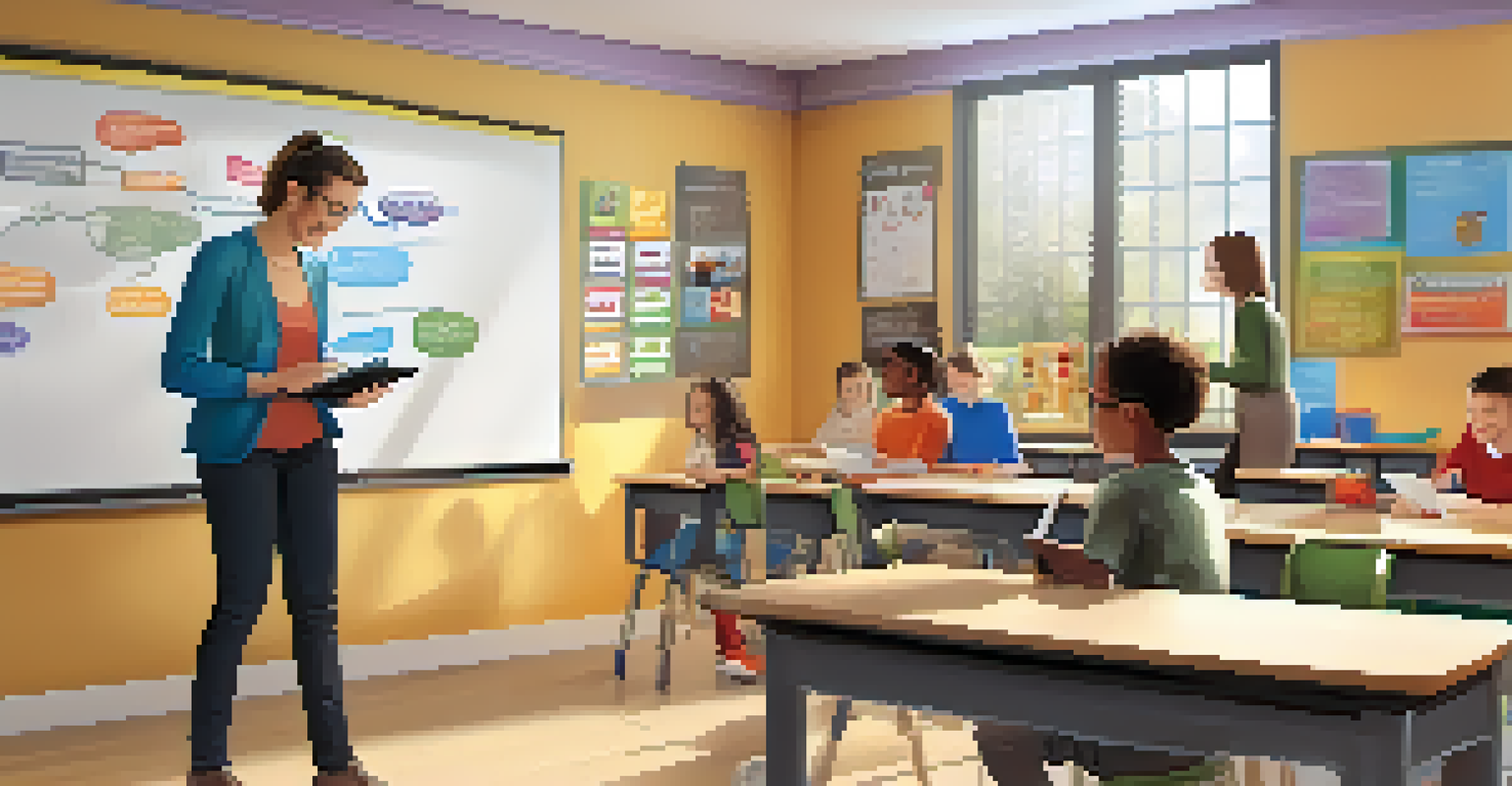Creating Inclusive Learning Spaces for Diverse Learners

Understanding the Importance of Inclusivity in Education
Inclusivity in education means ensuring everyone, regardless of their background or abilities, has equal access to learning. This concept is vital as it not only enhances individual growth but also enriches the learning environment for all students. When diverse perspectives come together, creativity flourishes, leading to a more dynamic classroom experience.
Inclusion is not a matter of political correctness. It is the key to growth.
Moreover, inclusive learning spaces promote empathy and understanding among students. By interacting with peers from different backgrounds, students learn to appreciate diversity, preparing them for a globalized world. This cultural exchange fosters social skills and emotional intelligence, essential attributes in today’s society.
Ultimately, creating an inclusive educational environment benefits everyone involved. It cultivates a sense of belonging, boosts self-esteem, and encourages active participation. When learners feel valued and supported, they are more likely to thrive academically and socially.
Identifying Diverse Learners and Their Needs
Diverse learners encompass a broad spectrum of backgrounds, including varying abilities, languages, and learning styles. Recognizing this diversity is the first step in creating an inclusive environment. Teachers should take the time to understand the unique needs and challenges each student faces, as this knowledge informs effective teaching strategies.

For instance, some students may require additional supports like visual aids or collaborative learning opportunities, while others might benefit from more hands-on activities. Using a range of teaching methods can help accommodate these differences, ensuring all students can engage with the material. Regular assessments can also provide insights into student progress and areas needing more focus.
Engaging with parents and the community can further enhance understanding of diverse learners. Open communication can reveal valuable insights about students’ backgrounds and preferences, allowing educators to tailor their approaches. This collaboration fosters a supportive atmosphere that recognizes and celebrates diversity.
Designing Flexible Learning Environments
Creating a flexible learning environment is essential for accommodating diverse learners. This can include physical space modifications, such as adjustable seating arrangements or quiet zones for students needing sensory breaks. A classroom that is adaptable allows students to choose the learning style that works best for them, enhancing their focus and engagement.
The beautiful thing about learning is that no one can take it away from you.
Technology also plays a pivotal role in flexibility. Tools like tablets and educational software can provide personalized learning experiences, enabling students to progress at their own pace. Moreover, incorporating both digital and traditional resources ensures that all learners can access content in a way that suits their needs.
However, flexibility should also extend to teaching methods. Offering a variety of instructional approaches, such as group work, independent study, or hands-on projects, empowers students to take ownership of their learning. This adaptability not only fosters independence but also caters to different learning preferences.
Implementing Culturally Responsive Teaching
Culturally responsive teaching recognizes and honors the diverse cultural backgrounds of students. This approach not only validates students' identities but also enhances engagement by connecting learning to their real-life experiences. By incorporating culturally relevant materials and examples, educators can make lessons more relatable and meaningful.
For example, when discussing historical events, including multiple perspectives can help students understand the broader context. This practice encourages critical thinking and allows learners to see the value in diverse viewpoints. Additionally, celebrating cultural events or traditions within the classroom can enrich the learning experience and foster inclusivity.
Moreover, culturally responsive teaching promotes a strong sense of community. When students feel their backgrounds are acknowledged and respected, they are more likely to participate actively in discussions. This engagement not only benefits individual learners but also enhances the collective classroom dynamic.
Encouraging Collaborative Learning Experiences
Collaboration is a powerful tool in fostering an inclusive classroom. By promoting group work and peer-to-peer learning, students can leverage each other's strengths and support one another’s growth. This social interaction not only builds relationships but also encourages empathy and respect among diverse learners.
For instance, mixed-ability groups can provide opportunities for stronger students to mentor their peers, reinforcing their own knowledge while helping others. This collaborative approach fosters a sense of community and belonging, making every learner feel valued. It also teaches important life skills such as teamwork, communication, and problem-solving.
To facilitate effective collaboration, educators can create structured activities that require input from all group members. Setting clear expectations and roles within groups ensures that every student has a voice and contributes to the learning process. This method not only enhances learning outcomes but also builds confidence in students' abilities.
Utilizing Assistive Technology to Support Learning
Assistive technology has revolutionized how diverse learners access education. Tools such as speech-to-text software, audiobooks, and interactive apps can significantly enhance learning for students with various needs. By integrating these technologies into the classroom, educators can provide tailored support that meets individual requirements.
For example, a student with dyslexia might benefit from text-to-speech tools that help them comprehend written material more easily. Similarly, visual learners can utilize graphic organizers and video resources to grasp complex concepts. The key is to identify the right tools that align with each student’s learning style and challenges.
Furthermore, it’s crucial for educators to receive training on using assistive technology effectively. This training empowers teachers to incorporate these tools seamlessly into their lessons, ensuring all students can engage meaningfully with the curriculum. When technology is used thoughtfully, it can bridge gaps and create an equitable learning experience for everyone.
Fostering an Environment of Continuous Feedback
Creating inclusive learning spaces requires a commitment to continuous feedback. Regular check-ins with students can help educators assess how well their teaching methods are meeting diverse needs. This practice not only identifies areas for improvement but also establishes a culture of open communication.
Encouraging students to share their experiences and suggestions fosters a sense of ownership over their learning journey. When learners feel heard, they are more likely to engage actively and contribute to classroom discussions. This feedback loop is essential for tailoring instruction and enhancing the overall learning environment.

Moreover, incorporating peer feedback can also be beneficial. Allowing students to provide constructive criticism to one another promotes collaboration and helps them develop critical thinking skills. This ongoing dialogue not only strengthens relationships among students but also contributes to a more inclusive and supportive classroom atmosphere.